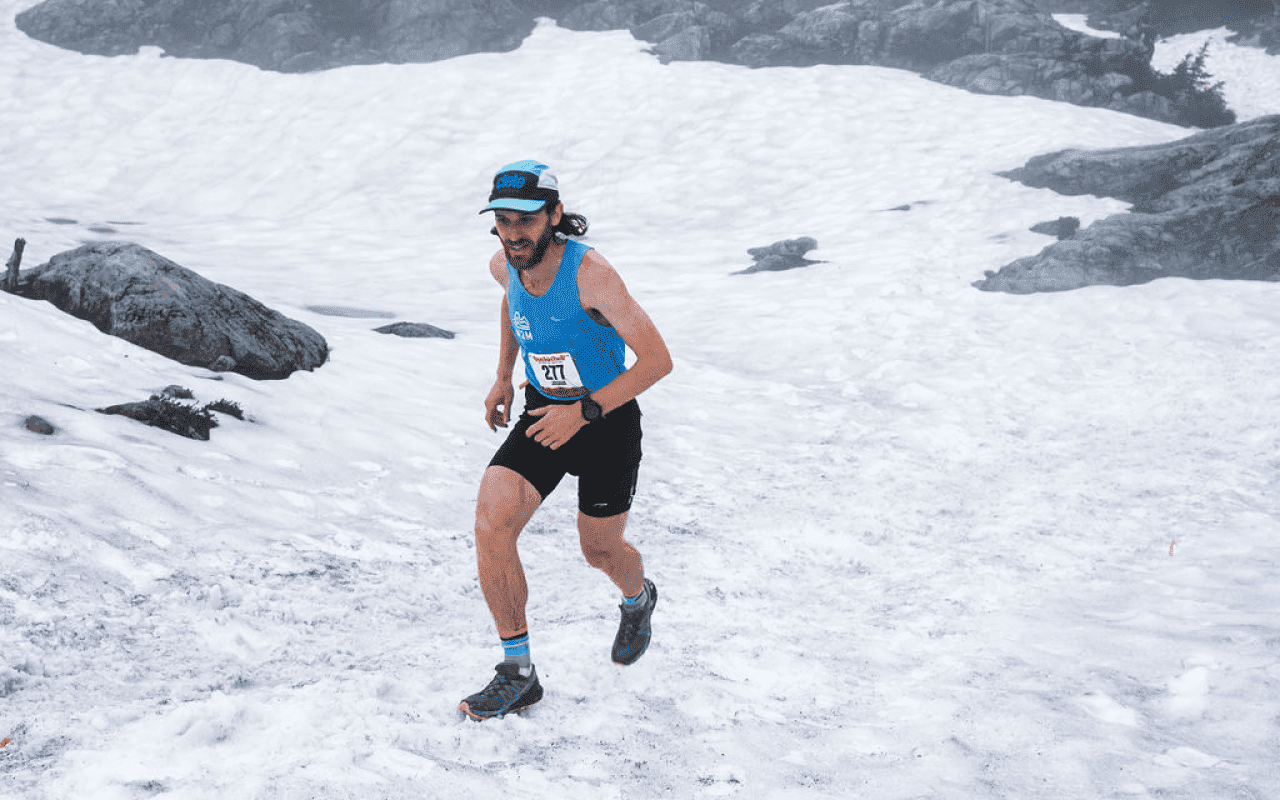
The Ascent – From the Road to Trail with Josh Potvin
This week we caught up with Mile2Marathon athlete, Josh Potvin, fresh off his win at Buckin’ Hell. A grueling 35km trail race through the North Shore Mountains with almost 2500m of elevation gain. Coached by Dylan Wykes since 2018 through our Personal Coaching Plan, Josh has steadily improved his 5k through half marathon bests, now coming into his own on the trails with his eyes set on Squamish 50km this weekend. In our chat we dive into how Buckin’ Hell played out, how he’s adjusted to training for longer trail races, race day nutrition and much more.
We’d love to hear more about your Buckin’ hell win! How’d the race play out, were you feeling fantastic the whole way or did it start to get tough at a certain point?
This was my second trail race and I was really unsure what I was getting into. I think that was the hardest part, but a nice challenge. I had raced a couple of weeks before, in Crowsnest Pass at the Sinister 7 Relay, and that race went well so I wanted to really test myself at Buckin’ Hell.
Right from the gun I started out hard. You know how you go into a road race. You’re all warmed up ready to go, standing on the line. That’s not the case in the trail scene. The paces are so different and I wasn’t sure if I was warmed up enough. I warmed up for 20 min so I didn’t overdo it, but enough to get the legs ready and not overheated. Plan was to use the first few minutes to get going. After the first 10 mins my legs felt heavy and I was like oh, this is not good.
But I went out hard and no one came with me. I was shocked that no one attempted. I kept rolling the first 6k. It was a 400 meter climb, and I decided to go hard for that first climb and see how it goes. It felt good and I found myself with a ten minute lead. After that, it was a lonely race. For most of the race I was running scared, not knowing if someone was going to catch me. It’s so hard to tell on the trail, it’s an entirely different racing mentality.
-
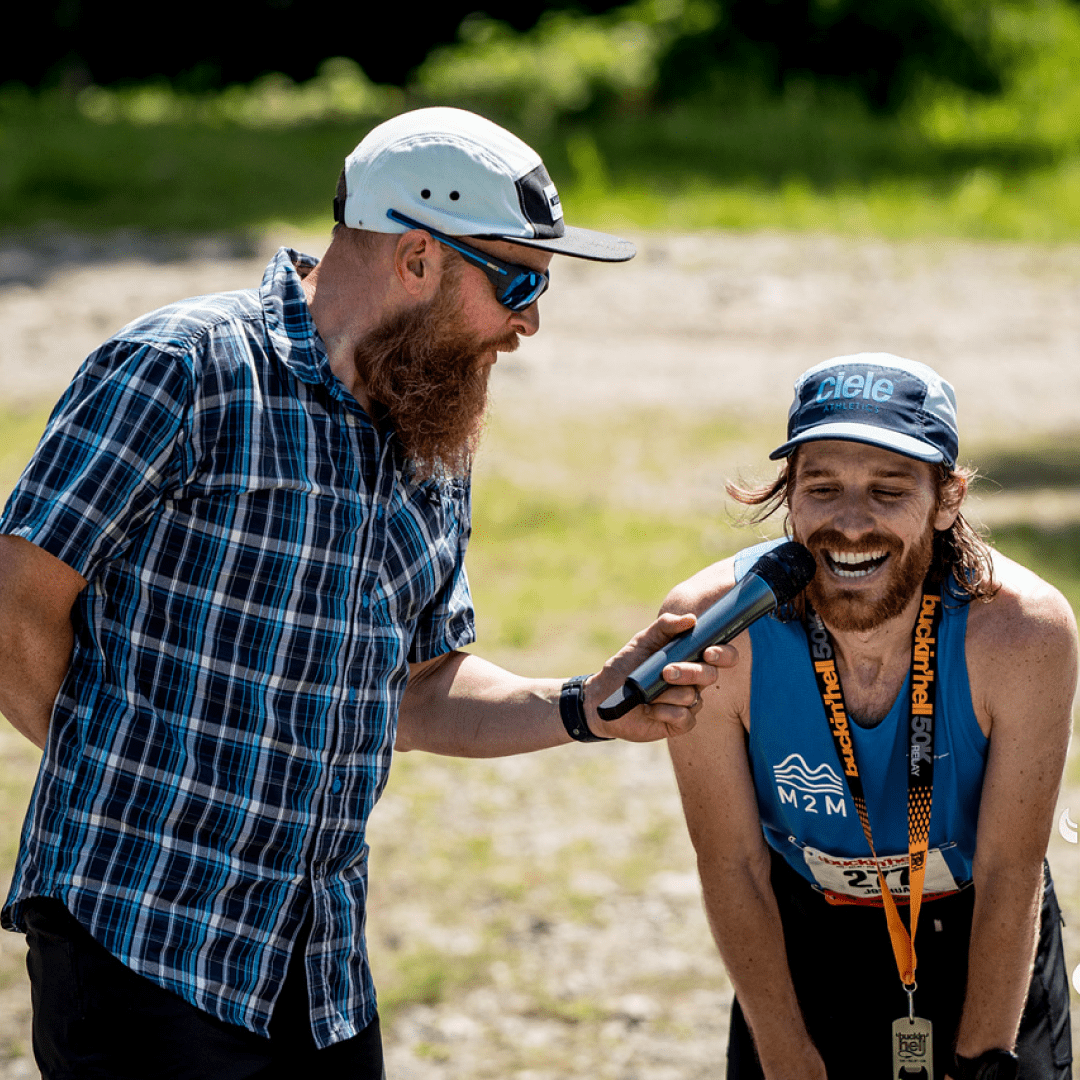 Photo: Ty Holtan
Photo: Ty Holtan -
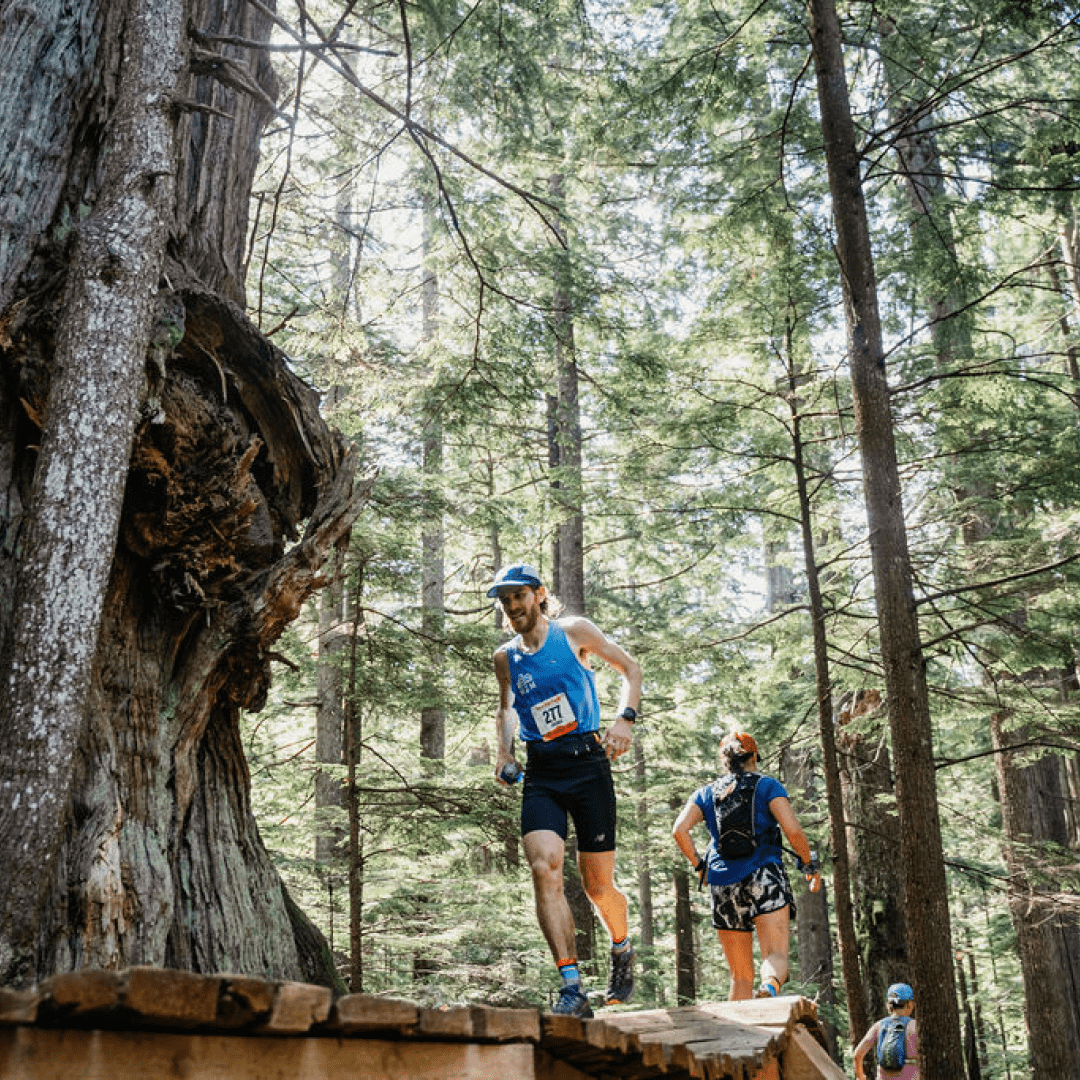 Photo: Ty Holtan
Photo: Ty Holtan
Oh yeah, nothing like running scared in the woods to get those competitive juices flowing. I’d love to hear more about your transition into the trail scene, how did that come about, was it a natural transition into the woods?
I come from a 5k to 10k road and track background. In the last two years, over COVID, I started building up to the half marathon distance. I just found it a sweet spot that I really enjoyed. I started with a half marathon and have been slowly progressing to further and further distances.
Well I think you’ve found your jam! I know you’ve run some pretty fast times on the roads including a 68’ at First half this winter. How have you adjusted your training the last few months to get ready for the longer and more technical trail races and what’s been the biggest adjustment for you? Are you still fitting quality in, or is it just a lot more time on your feet?
Bit of both. My transition to the trails really happened in the spring before the Sun Run. I had a really bad hamstring injury and just couldn’t do any speed work within reason but was able to manage 120k per week of easy running. I started off building a base, and then after a while, I started getting back into some speed work again. It started to feel a bit better.
The speed work is similar in effort but you have to not be worried about pace. Training on variable, hilly, uneven terrain you can’t really expect to hold a certain pace like you can on the road. You get really good at training by effort, which I think having an experienced road background has helped. I think that road speed to trails translates quite well. Understanding how to run by effort and not to worry about what your watch says is really important.
I have been running a lot more mileage in the trails. Mainly because I’m training and getting ready for a 50k in a few weeks and have been slowly building up to that. Normally, I’m only around 100k per week. I’ve been doing closer to 120km with 2000-3000 meters of elevation. So actually quite a bit more time on feet. I run about 10 to 14 hours per week versus 7 to 8 hours, which I typically did on the roads. I still take the off days really easy though. Like I mean, really easy. I’m really good at taking my off days easy, which I think you need to do otherwise you burn out.
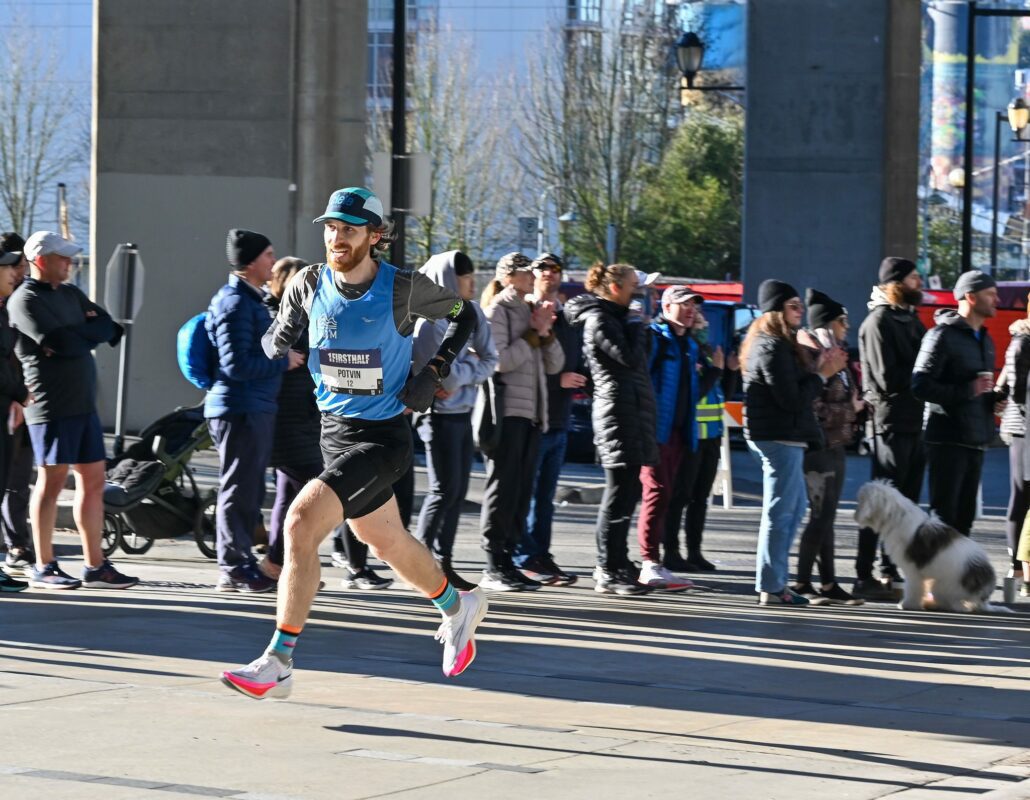
Oh definitely! Those recovery days are sometimes just as important as your hard days. It’s also really nice to see you take advantage of an untimely injury and turn it into a positive outlet! Do you still keep track of weekly mileage or do you follow a different metric to measure volume?
Little bit of both. Most of the time, I would say it’s a mix but primarily it’s time based not really distance based anymore. That’s been a big adjustment actually. Compared to the road, usually you’re tuned in to your pace and trying to focus on hitting paces for set kilometers. But now on variable terrain, it’s all effort based. That’s the key. Focus on your effort and really nail into how your legs are feeling and push that interval if you feel good. It took a little bit of getting used to figuring out the effort to push a run and finding the right line without exhausting myself too early in the session. I think that’s been a tricky transition but am starting to get the hang of it.
Oh I think you’re getting more than just the hang of it! You mentioned you’re gearing up for Squamish 50 km, what are you aiming for on the day— goal time, place or both?
I think a bit of both. For me, I have some pretty ambitious goals for Squamish. Based on my last two races, I’d like to go out and try to win it. Based on how I feel right now that is doable. But, it depends. It depends on who shows up. In the Canadian trail running scene, it’s not that it’s not strong, it’s just the field’s not as deep as compared to some of the big road races. There’s a lot of talented trail runners, but there’s also a lot of trail races, and a lot of those races divide the top athletes.
But I think either way, I’d like to be in contention for a podium and the goal is to win. Timewise, I’m going to go out and try and get the course record. It’ll be tricky because I think the course now is a little longer than it used to be and it has been around since 2014. I’m going to go out from the gun and see how I feel. If I feel good, I’m going to keep going. If something feels off on the day I’ll try to stick to competing for the win.
We’ll see how it goes. 50km is a long way and anything can happen. Five hours of racing is a long time.
-
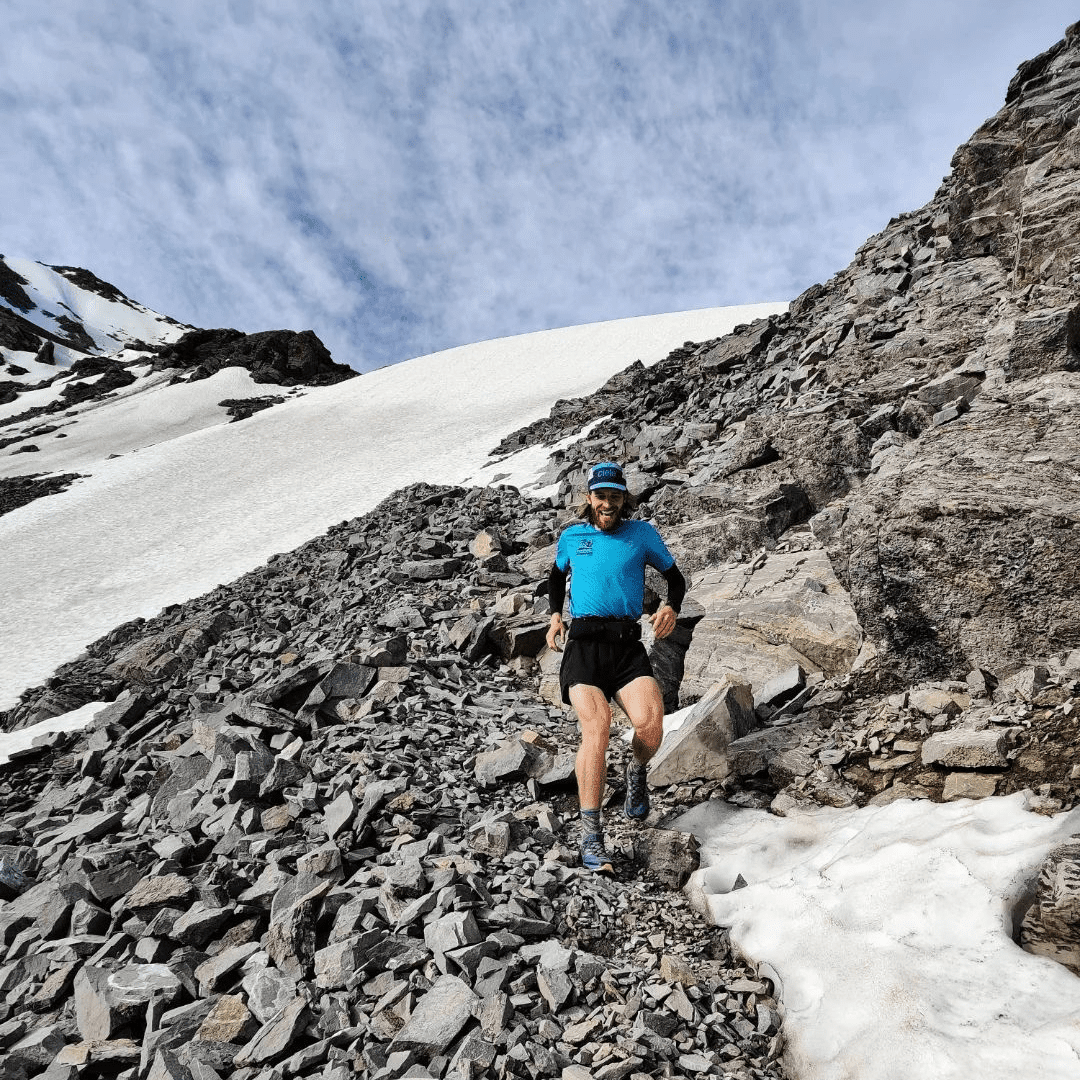 Photo: -
Photo: - -
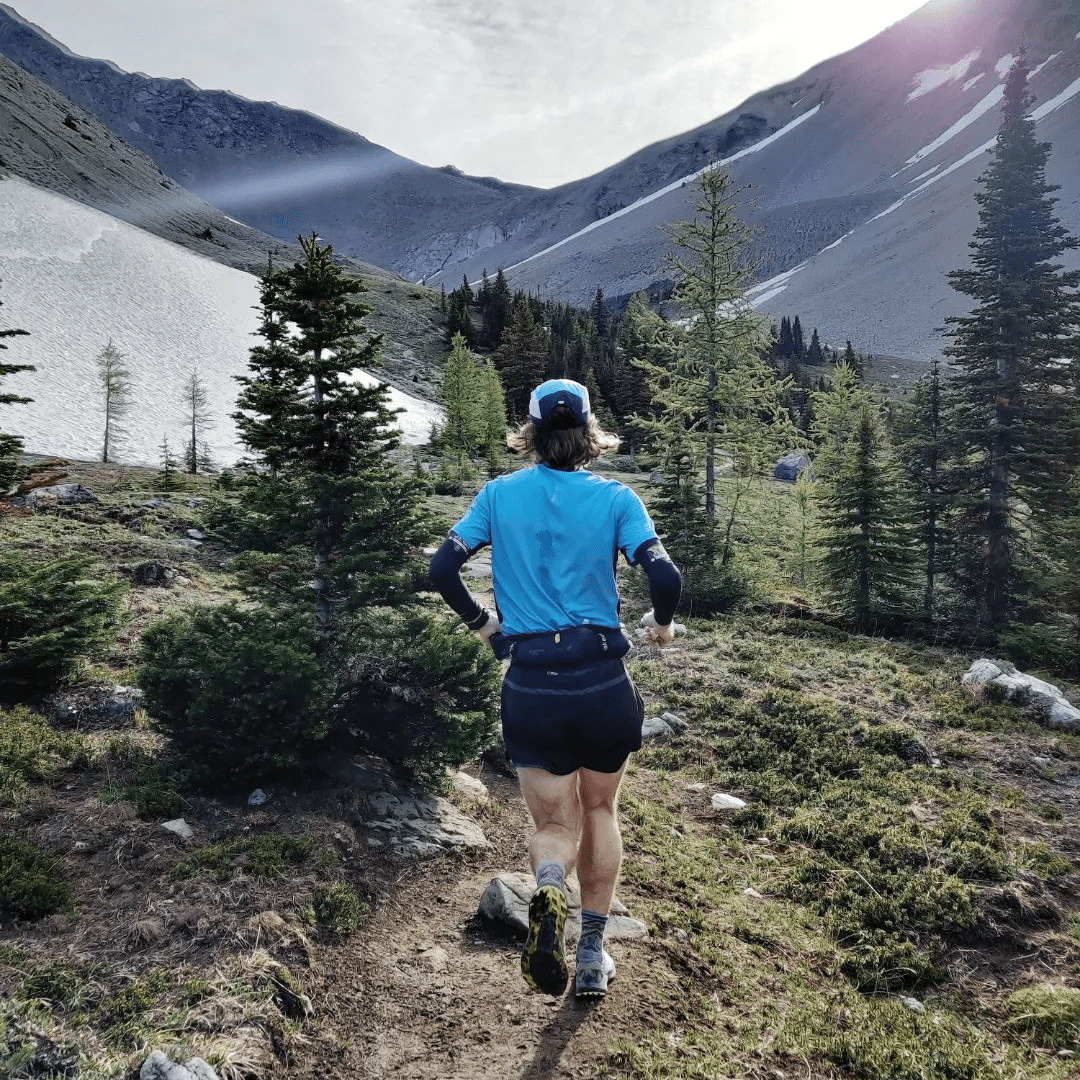 Photo: -
Photo: -
Oh, I can only imagine. 5hrs is a lot of time on your feet. I saw in your Bucking Hell Strava post that you forgot the salt in your gels, would you be open to sharing a bit more of your nutrition strategy for the race? How have you adjusted your nutrition for these longer races and are there any adjustments you’ll make for Squamish?
Well, for me I’ve really struggled with that. I’ve always had a sensitive stomach. I’ve always struggled with stomach issues and especially in those longer races. I’ve had to work with that quite a bit and I actually make my own gels now.
I found some gels that work, like Huma, which are very natural tasting. Super simple on the stomach. But I started making my own, which is how I made mistakes like forgetting to add salt, which is a pretty big deal over 35k on a hot day. The gels are pretty basic. I mix jelly, syrup, salt and chia seeds and blend it all together. I’ll try to take that every 30 mins. The distances are not long enough for me to use hard fuel and I have not trained my body for other foods.
For pre-race fuel, I eat pretty light with just plain oatmeal in the morning. It has been a struggle in a lot of trail races to get up so early as I find I need to eat a couple hours before I warm up to have my stomach feeling like nothing will bug me.
In terms of hydration, I learnt from Buckin Hell that I could have taken in a lot more water. I probably only went through just over a liter, which was clearly not enough. By 20-25k I was starting to feel it and cramping. I have to get more into the habit of constantly sipping as I go. Which is something I’ve tried to incorporate into my training.
That is wild. I love how you’re making your own gels. Now your Strava post makes a lot more sense! I was trying to wrap my head around you forgetting to add salt to your standard packaged gel and it just wasn’t computing. I feel like we’ll have to release your special recipe is SQ50 goes well!
Anyways, last question before I take too much of your time up. Living in North Van you’re kind of in a trail running paradise, do you have a favourite route or trail that’s been your go-to?
As for routes, oh there’s so many. I have a couple favourites though. My go-to is starting at End of the Line General Store and from there that gives you lots of options; you can go to Seymour, throughout Lynn, and you can take off into many areas. If I’m looking for an easy day without too much elevation I’ll go to Fisherman’s Trail.
Baden Powell Trail though is one of my favourites. I just love that trail. It cuts across the Northshore. I haven’t done the whole traverse yet, but one day I will.
Thanks for taking the time to sit down with me Josh! Loved the training and nutrition tidbits you shared. Wishing you all the best in Squamish!
 Justin Kent
Justin Kent